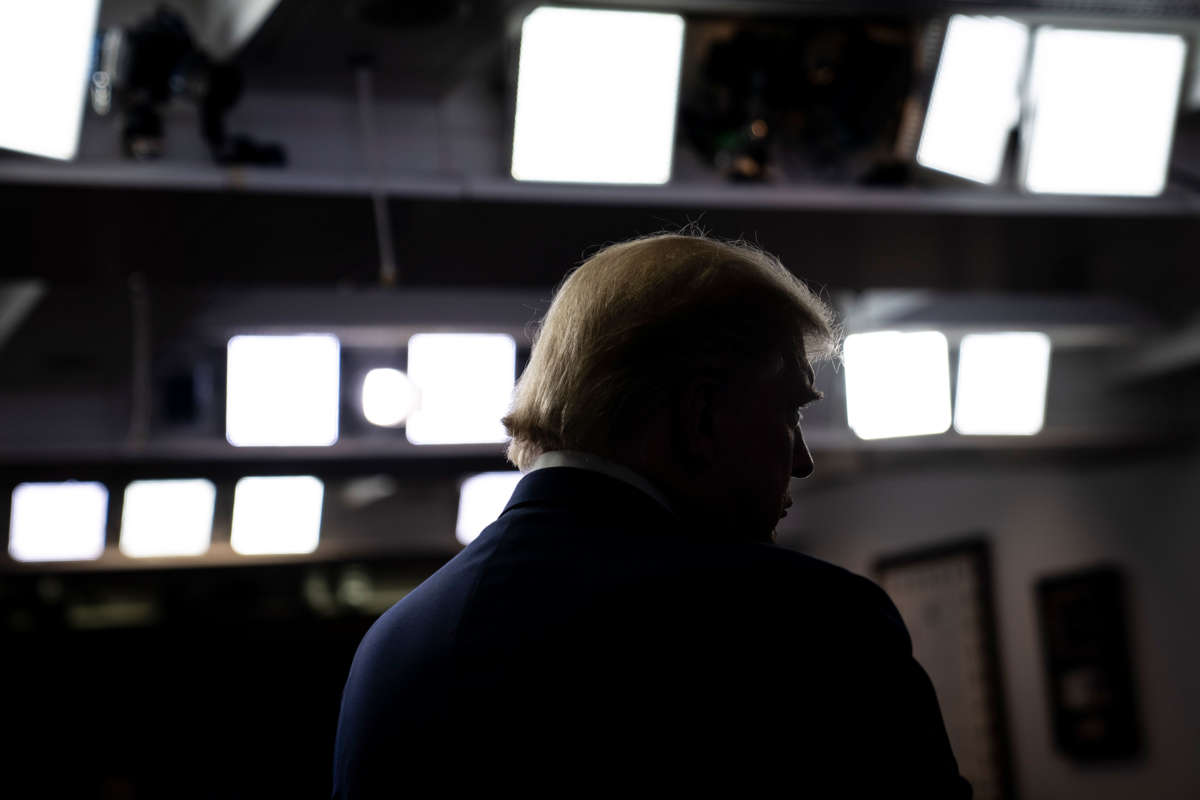Did you know that Truthout is a nonprofit and independently funded by readers like you? If you value what we do, please support our work with a donation.
In the middle of March, President Donald Trump claimed he and the rest of the federal government were caught off guard about the novel coronavirus, including its potential to spread outside of China and cause harm to other countries.
“Nobody knew there’d be a pandemic or an epidemic of this proportion,” Trump said on March 19. “Nobody has ever seen anything like this before.”
Those comments came just days after telling reporters at the White House that he viewed COVID-19 as “a pandemic long before it was called a pandemic,” adding at the time, “I’ve always viewed it as very serious.”
So did Trump know or not know about the threat COVID-19 posed — and if he did, why did he spend much of late February and early March assuring Americans everything was “under control,” and describing criticisms of his rosy outlook as a “hoax”?
A report from ABC News that was published on Wednesday may help explain the matter better — but not in a way that puts Trump in a good light.
Four sources speaking with the news agency described how U.S. intelligence officials were notified as early as November about the outbreak of a disease in the Chinese city of Wuhan. The contagion was serious enough, the sources said, to warrant an official report from the National Center for Medical Intelligence (NCMI) in its briefing that month.
The report was compiled using information obtained by computer and wire intercepts, as well as satellite imaging. Concerns were raised by the NCMI that the emerging disease could interfere with the missions and assignments of U.S. military forces beyond China’s border.
“Analysts concluded it could be a cataclysmic event,” one of the sources explained. That same source added that the Pentagon and the White House were “briefed multiple times” on the matter.
The National Security Council, the White House and other federal officials continued to receive updates on the spread of the disease throughout December, the sources elaborated. In January, the information also appeared in a Presidential Daily Briefing — a process that requires extensive vetting before it reaches the desk of the commander in chief.
Several media reports in recent days have detailed a bungled and slow response from Trump and others in the White House, with next to nothing being done in terms of preparations that could have been made over the course of 70 days starting in early January to mitigate the impact of COVID-19 in the U.S.
In one poll conducted late last month, close to 6 in 10 Americans believed Trump was too slow to act when it came to the pandemic.
With the revelation that the White House was briefed multiple times about the coronavirus between November and January, Trump might need to explain if he ignored the Presidential Daily Briefing which warned of the threat, or when he personally knew the virus could harm Americans.
Media that fights fascism
Truthout is funded almost entirely by readers — that’s why we can speak truth to power and cut against the mainstream narrative. But independent journalists at Truthout face mounting political repression under Trump.
We rely on your support to survive McCarthyist censorship. Please make a tax-deductible one-time or monthly donation.
